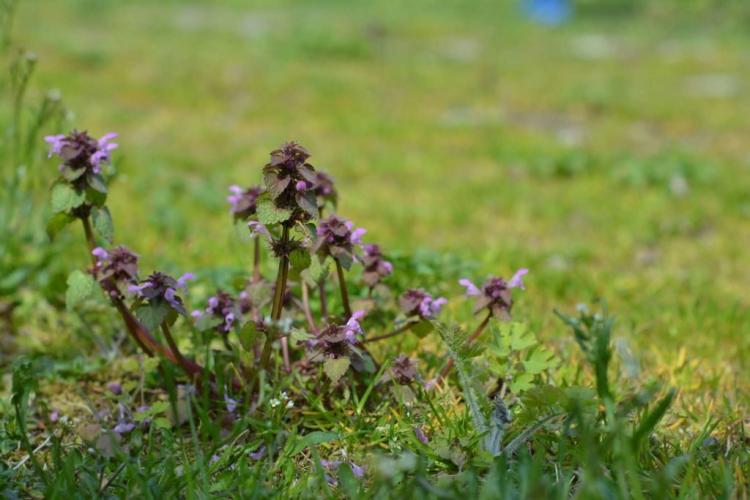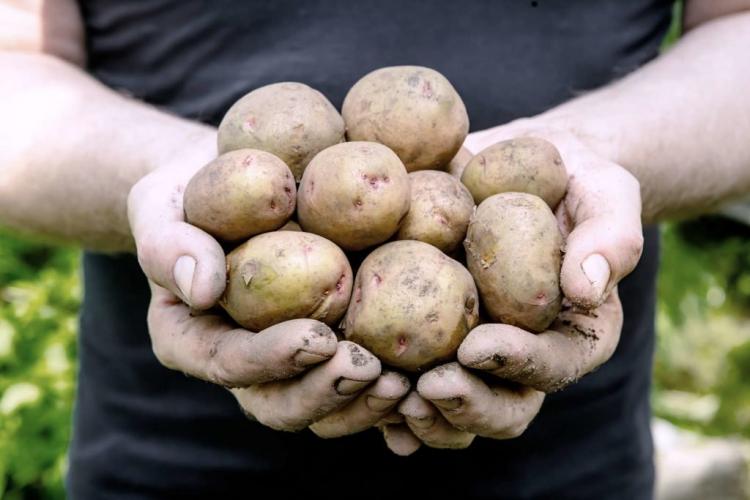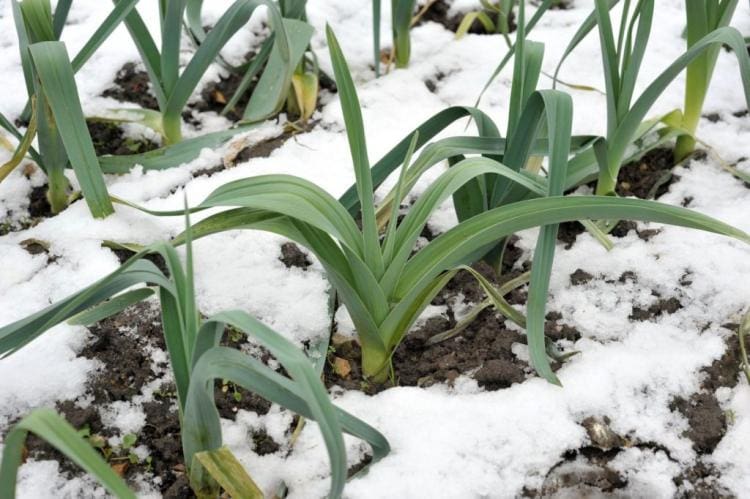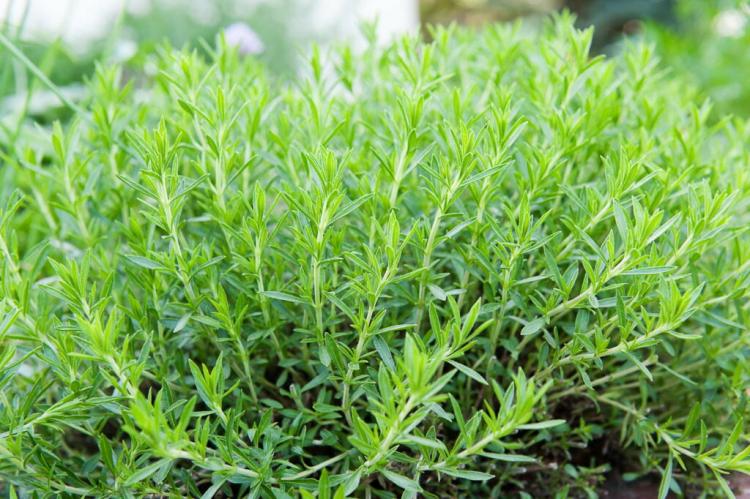Codling moth: Recognize and successfully combat damage
The proverbial worm in apples is one of the most common apple pests. But thanks to various strategies for combating codling moth, you are not powerless against it.
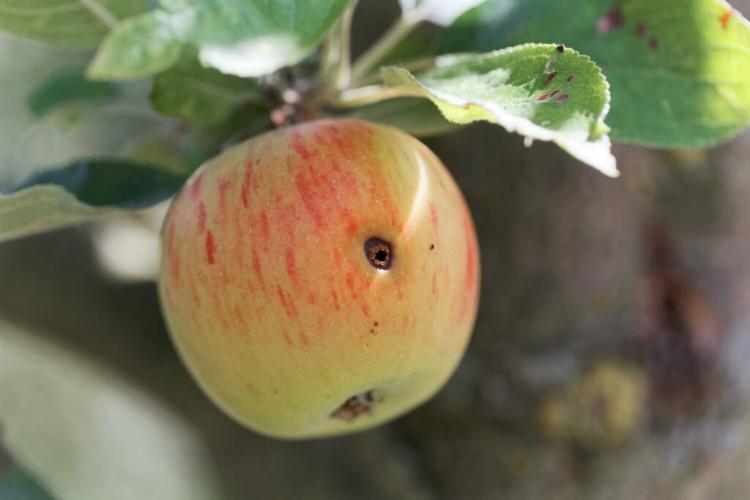
Apples infected with codling moths can quickly spoil the mood of hobby gardeners [Photo: ChWeiss / Shutterstock.com]
From the beginning of spring, the codling moth (Cydia pomonella ) is up to mischief and the feeding tunnels of its larvae can quickly spoil the fun of growing your own apples. This article explains how you can recognize codling moth by its damage. In addition, important ways of combating codling moth are summarized below.
By the way: the codling moth is sometimes confused with the apple web moth. However, the codling moth does not form a web, which is why the distinction is easy.
Recognizing codling moth: appearance and damage
Table of Contents
The codling moth damage can be recognized by the feeding holes of the larvae in the fruit, which are also called worm bites. If you cut the fruit open, you can see the typical feeding tunnels, which are also contaminated with small black droppings. If the apples are attacked at an early stage, the unripe fruit will fall off and rot. If the infestation sets in later in the year, the apples can still be used. The affected areas have to be cut away. In addition, the shelf life of the apples is reduced.
Codling moth pheromone traps enable particularly early detection. The pheromones attract male codling moths, which then stick to the sticky trap. In this way, the flight of moths and thus the early laying of eggs can be recognized.
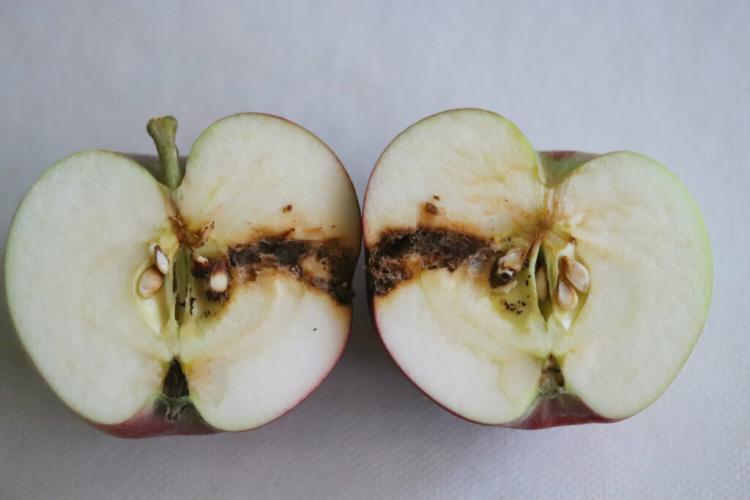
The larval feeding tunnels often spiral in a spiral towards the middle of the apples [Photo: aleori / Shutterstock.com]
At a glance: What does the codling moth look like?
- Adult moths: Gray-brown wings with light stripes and copper spots on the wing tips; Length about 1 cm; Wingspan about 2 cm; mainly active at dusk.
- Eggs: oval, shiny shields.
- Codling moth larvae: white-yellowish with a dark head; initially 2 mm in size, fully grown up to 2 cm.
- Codling moth Damage: Small black holes in the apples; Contamination of the feeding tunnels and the entry point with flour-like feces.
If you want to fight the codling moth, you have to recognize it first: the codling moth is a brown-gray butterfly that often forms two generations a year in our country. The adult animals are gray-brown moths with a wingspan of about 2 cm. The wings are criss-crossed with bright stripes and end with a copper-colored spot on the tip. The first generation of adult moths hatch in spring. After the egg-laying, the larval stage and pupation, the second generation follows in July. The small butterflies are particularly active at dusk when temperatures are below 20 ° C.
The codling moth eggs can be recognized by their oval, shiny and shield-like shape. The codling moths lay these on the fruits and leaves of the apple trees shortly after they hatch.
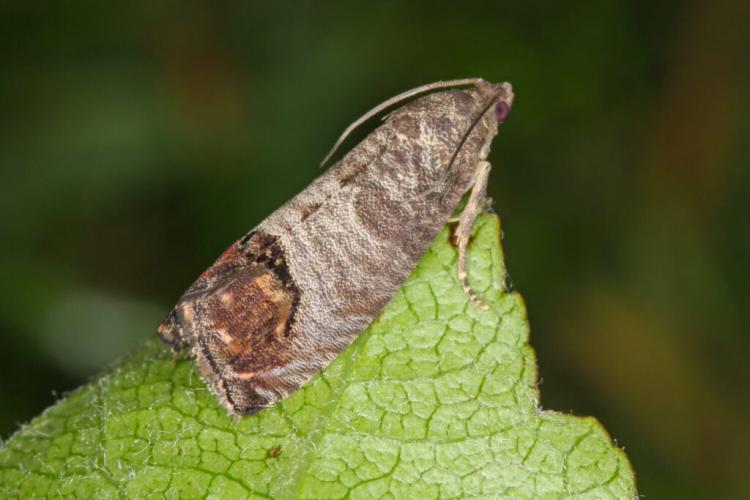
The codling moth are small, brown butterflies [Photo: Tomasz Klejdysz / Shutterstock.com]
After hatching, the larvae of the codling moth are initially 2 mm long and white-yellowish with a dark head. They look for their food source and dig into the pulp of the apples. Three to four weeks later, the clearly grown caterpillars leave the apples again and migrate to the trunk. There they pupate. Depending on the season, the larvae of the codling moth, which are now up to 2 cm in size, develop into adult butterflies. Otherwise they hide under the bark to hibernate in a protected place.
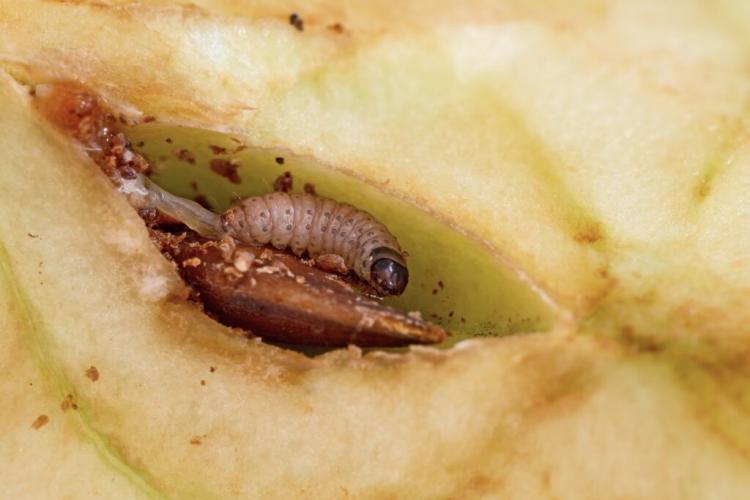
The codling moth larvae feed on the skin, pulp and seeds of apples [Photo: Sarah2 / Shutterstock.com]
Fight codling moth
There are a variety of different approaches to controlling codling moth. The most relevant are briefly presented here. The growth and development of the codling moth are strongly temperature-dependent, which makes it difficult to determine the appropriate control time.
The first generation of butterflies hatch between mid-April and early May. The second generation of butterflies appears from July.
Tip: Codling moth trap to monitor the flight of moths: Traps are used between mid-April and early May and from July to August. Codling moth traps cannot control the pests, but they can still be used to determine the flight of moths and thus the mating period. Yellow boards or specific pheromone traps are used. Pheromone traps are clearly preferable to yellow bars: They only attract codling moths. That makes the evaluation easier. This also prevents completely harmless insects from perishing on the adhesive surfaces of the yellow boards. The time of treatment can be determined via the butterfly flight, because after the eggs have been laid, it takes 7-15 days for the first larvae to hatch. During this time frame, the apples should be checked regularly and then treated.
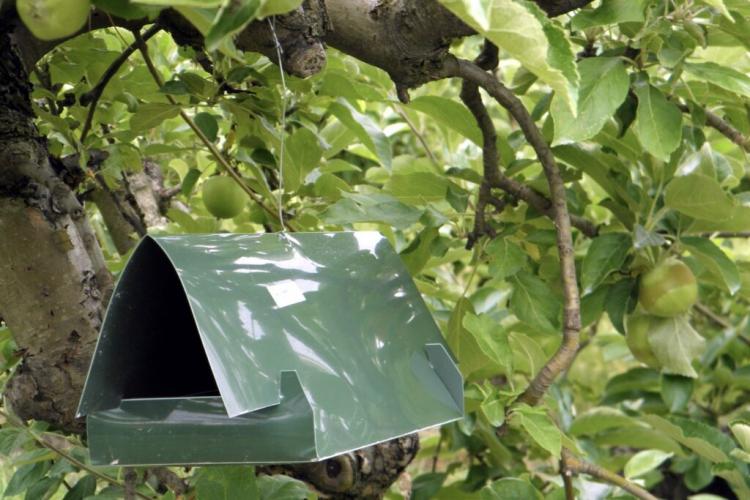
Pheromone traps can help choose the right control period [Photo: Kaaca / Shutterstock.com]
Fight codling moth with pesticides
Chemical codling moth pesticides are not approved for hobby gardeners and use is not recommended due to the many biological codling moth control methods. Approved biological codling moth sprays are preparations based on granulose viruses. But resistance has already developed: some codling maggots remain unaffected by the biological agent. The granulose virus preparations only act on young larvae, which is why the right time and repeated treatment are important.

Chemical sprays are only approved for commercial apple cultivation [Photo: Adragan / Shutterstock.com]
Nematodes against codling moths
In addition, nematodes can be used to control codling moths, as they are a biological and harmless type of treatment. This not only protects people and the environment, but also spares other animals, insects and plants. Our Plantura SF nematodes are, for example, very good against codling moths, but can also be used against sciarid gnats and ants. The tiny nematodes of the species Steinernema feltiae parasitize the larvae of the codling moth and thus prevent further reproduction. The larvae often choose dry places in the cracked trunk of the apple trees as winter quarters. Therefore, a suspension with the nematodes can be sprayed on the trunks of the apple trees from September to March. The ideal weather conditions for spraying are cloud cover, humidity and temperatures above 12 ° C, because nematodes are sensitive to UV radiation, drying out and low temperatures. Since the larvae stay in the same place all winter, the extended treatment period is another advantage of this method.
Tip: Nematodes are a large and diverse family. Our SF nematodes are only specialized in a few hosts, so that they do not pose any danger to humans, animals or other plants.
Parasitic wasps against codling moth
Certain parasitic wasps also help against codling moth, as they parasitize the pests' eggs. It is worthwhile to attach the small cards available in stores as early as possible. It is best to do this from April or May.
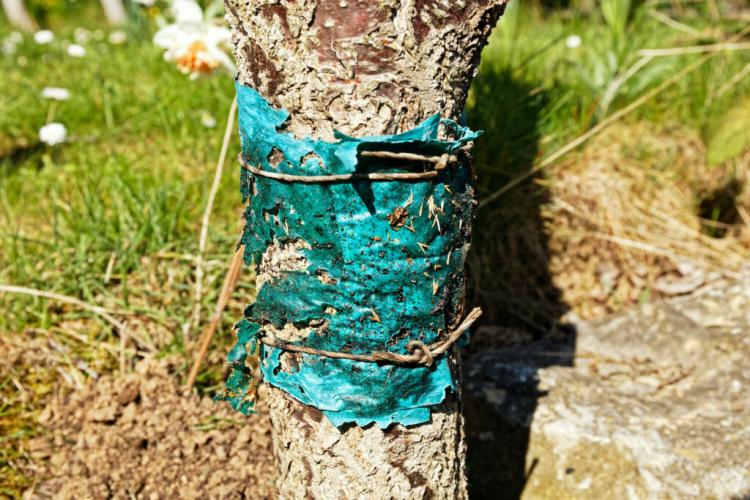
Unfortunately, glue rings do not help against the codling moth [Photo: AlexBuess / Shutterstock.com]
Fight codling moth with home remedies
Even without spending a lot of money, you can achieve success in the control of codling moths. For example, you can mix a wormwood-based spray against codling moth yourself. To make the vermouth manure, about 300 g of fresh wormwood leaves must be added to 10 liters of water. Then let the whole thing stand for about 14 days and stir it occasionally. In the next step, the leaves are strained and the liquid manure can be used as a codling moth spray.
Attaching 10 to 20 cm high corrugated cardboard rings around the trunk of the apple trees is also relatively easy and inexpensive. Since the codling moth larvae like to visit the cardboard to pupate, it is worthwhile to attach it from June onwards. Now all you have to do is check the cardboard rings regularly and remove the larvae if necessary.
The use of glue rings, on the other hand, usually does not help with codling moths.

The larvae pupate in cracks in the trunk so that they can hardly be seen and they are protected [Photo: Stasivanovv / Shutterstock.com]
At a glance: How can you control codling moth?
- Pay attention to the correct timing, as many types of control only work at a certain stage of development.
- Common and approved codling moth sprays are based on granulose viruses. However, these only affect newly hatched larvae.
- Codling moth nematodes are an effective control method. They parasitize the codling moth larvae.
- Certain parasitic wasp species parasitize codling moth eggs.
- Various home remedies such as vermouth or corrugated cardboard can also be part of the control strategy.
Prevent codling moths
An infestation with codling moths cannot usually be completely prevented, but there are some preventive and mitigating measures.
- If you shake off your trees again and again in winter, most of the pupated larvae will fall down. Ideally, you should place a large sheet or tarpaulin under the tree, which then makes it easier to collect the larvae.
- Larvae can also be removed by searching and brushing the trunks – especially from older trees.
- Remove infected fruits immediately. In this way, you can prevent the larvae in your apples from developing into adult moths.
- Encourage beneficial organisms such as ear peas and birds, which are natural enemies of codling moths. You can find tips on this in our article on the bird-friendly garden.
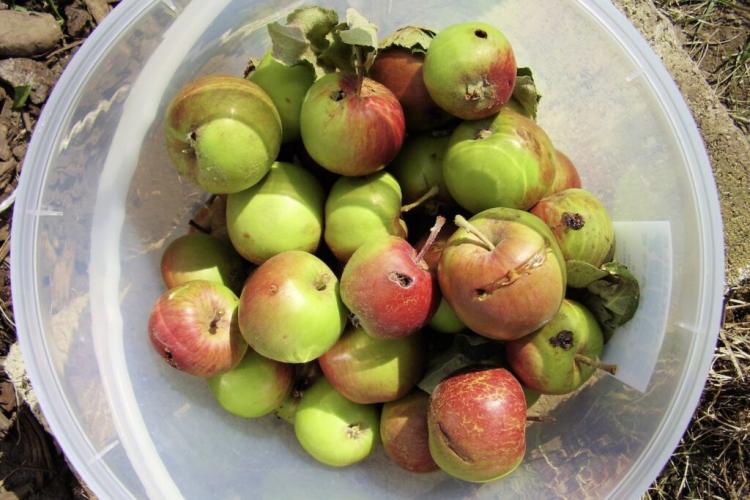
Remove infested fruit from both the tree and the ground [Photo: Wattlebird / Shutterstock.com]
Codling moths are unfortunately not the only pests that spoil the apple harvest. Learn about other diseases, pests, and treatment tips in our article on apple tree diseases.

